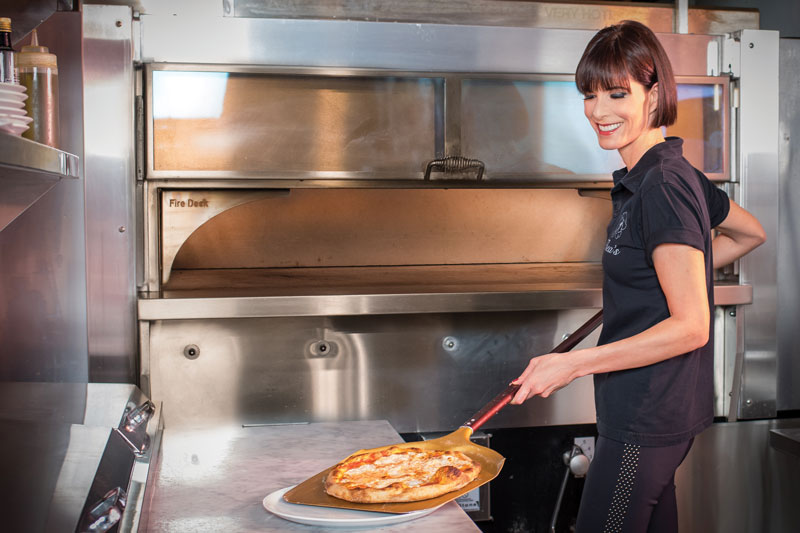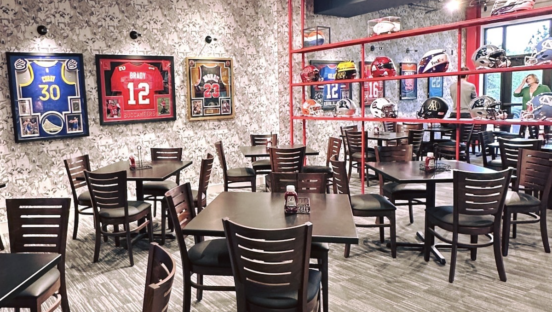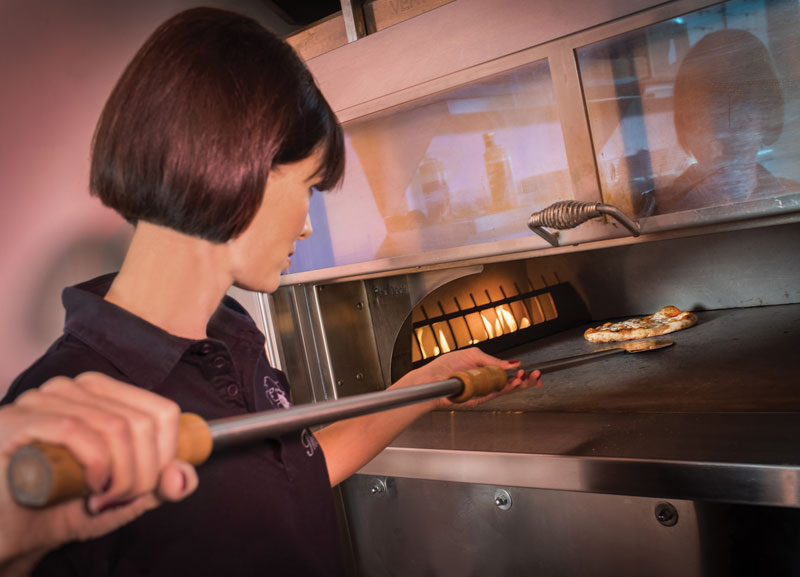
In her teenage days, London-born Thea Goldman, owner of Thea’s in Miami, traveled the world as a fashion model—living in Paris, Tokyo, New York City. But her true passion wasn’t strutting down the runway; it was food.
She chased jobs in and out of the kitchen, using modeling as a way to experience food cultures in far-flung destinations. Goldman relished the Parisian dedication to freshness, absorbed the Japanese obsession with precision and cleanliness, and learned business savvy in New York. After facing a deadly disease—she’d overcome lymphoma twice by 21—it was time to reassess: What did she want in life? “What I really loved to do was eat and be around food,” she recalls. “I loved the theater that is the restaurant. It’s where I feel alive.”
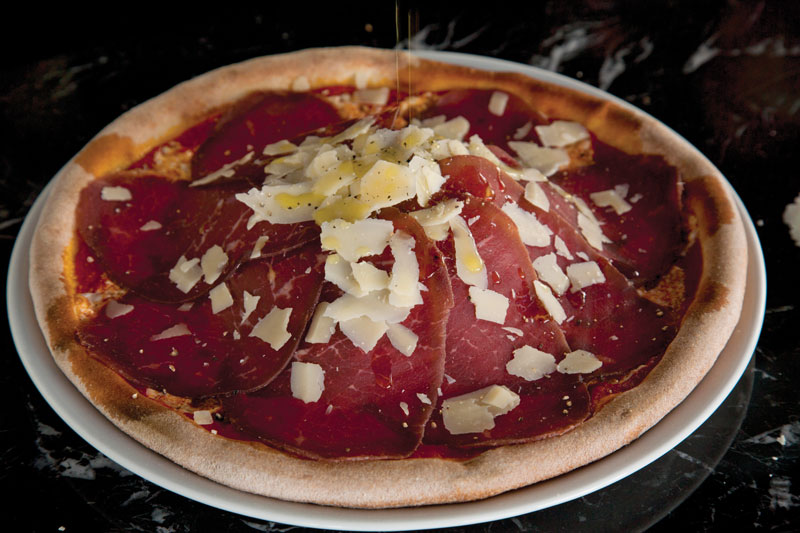 |
|
Thea’s pizzas were developed to put a high-end spin on a down-to-earth food, boasting a more elegant look than the average pie. |
Boots On the Ground
In 2007, after taking some time away from restaurants to be a stay-at-home mom, Goldman opened a restaurant, Joey’s, in the then-desolate Wynwood Arts District of Miami—helping launch a neighborhood now celebrated for its hip, artsy-gritty vibe. She admits a love for pioneering concepts in underserved areas, a tactic she repeated after selling out of Joey’s to stamp her name on a new venture in Miami’s urban core: Thea’s, which she single-handedly opened in 2012.
Her past experiences cultivated a hardcore dedication to listening to the customer. “A lot of people leave a restaurant uncomfortable about sharing their real thoughts, so as an owner you have to be in constant data-collection mode,” Goldman says. “You have to ask what they liked, receive anything they didn’t like, and be really grateful for criticism if you get any. That’s how you build your business—not by thumbs-ups and cheering. You hear about the little things that didn’t work, then correct them immediately.”
This “boots on the ground” approach, Goldman believes, was the most critical lesson she’d learned in her earlier years. “You can’t be a long-distance owner, and you’re only as good as your last customer’s experience,” she adds. “It’s a tall order, but you care about every single person in a genuine way—not because they’re paying you, but because they’re valuable. You want them to leave thinking, ‘I spent my $20 on something worthwhile.’ They sense that. I’m working too hard to be mediocre.”
In bringing the Thea’s concept to life, her menu strategy was uncomplicated: Make food people want to eat. The non-trend-driven, simple fare at Thea’s stands out, in fact, for its utter lack of pretension in a city rife with glitzy facades. Minimal ingredients, top-notch execution and extreme attention to detail (think sandwich bread baked to order) drive the concept. “There was less ego from us—trying to show who we are—and more focus on who they are,” Goldman explains. “What would be comfortable, easy and enjoyable for them, the working customer?” Her mind immediately flew to pizza. Goldman professes a deep love for this humble, universal food: As a teenager in France, she ditched her beach-going classmates to wait for a wood-fired pizza truck and savor its egg-topped pies on a stoop—among her most cherished memories. “I remember places in the world I’ve visited by the pizza I’ve eaten,” she says. “I wanted good pizza, to sit somewhere that felt like more an occasion place. I didn’t want to go to a smart restaurant and eat smart food; I wanted to go to a smart restaurant and eat pizza.”
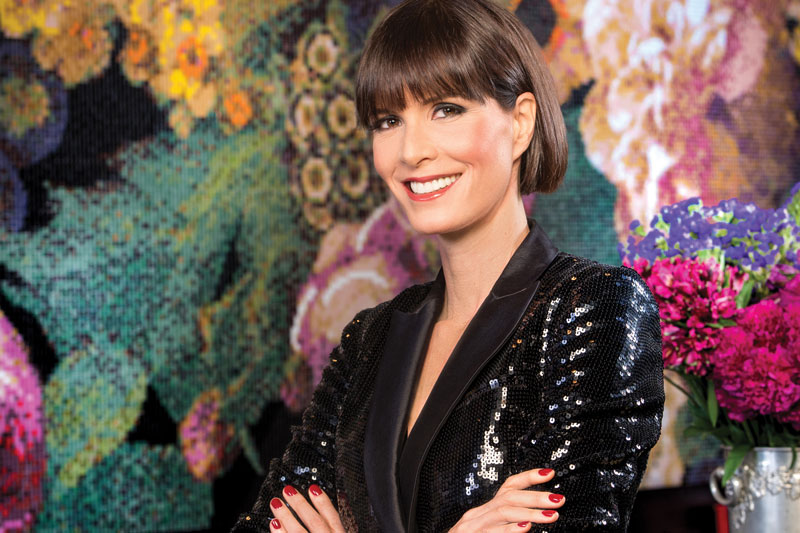
Glamourized, Personalized Pies
 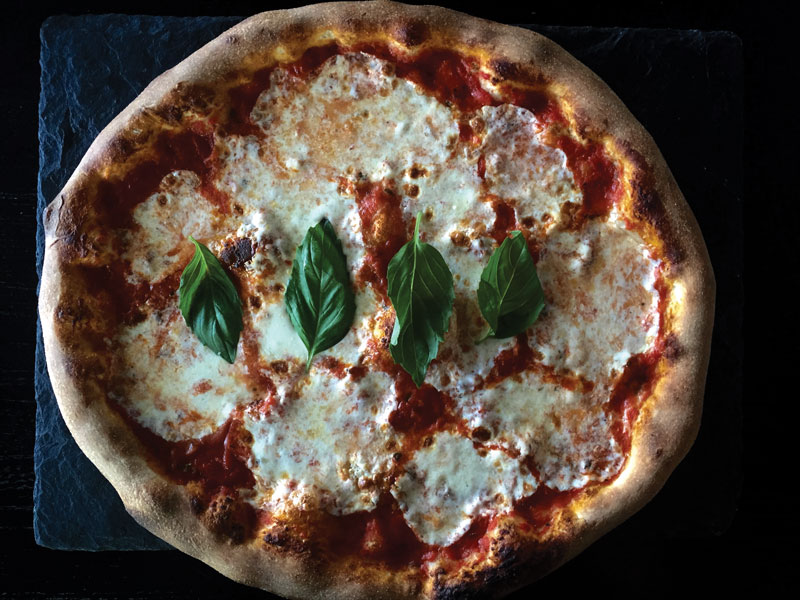 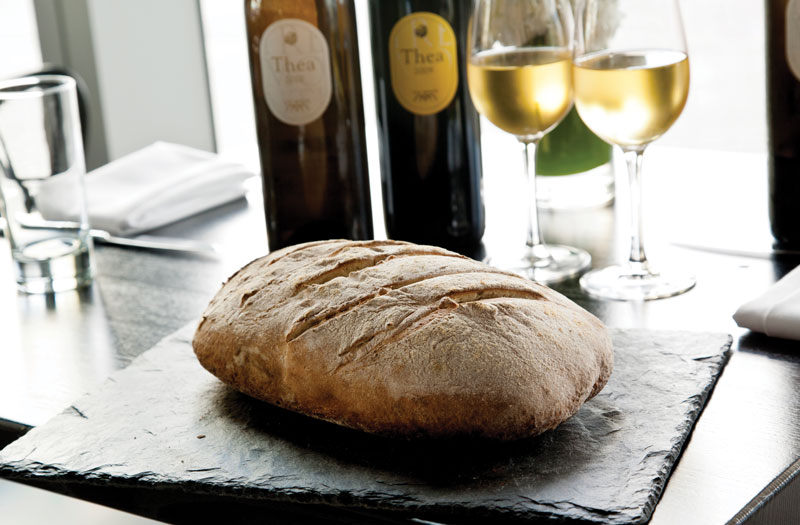 |
|
Intimate nighttime supper club gatherings, English garden-inspired decor and fresh bread baked to order set the scene for a sumptuous dining experience. Classic comfort food, including old-fashioned favorites like the ice cream sundae and Margherita pizza, offers diners a taste of the familiar. |
Goldman hoped that others would want to dress up to eat pizza, too—glamorous pizza, that is, “pizza that looked like a more elegant version of itself,” she says. She went to work developing a dough that holds up to handling, since she offers only weekday lunchtime service (10 a.m. to 5 p.m.), often to locals in business suits. Then she balanced classic recipes like the Margherita with pies that feature high-end ingredients: artichoke cream, Gorgonzola, figs, arugula and truffle oil. “That was the risk we took,” Goldman admits. “Our pizza didn’t immediately look like a lot of people’s idea of pizza.”
But the menu mix has been lauded by the local working class as well as white-collar types: construction workers and cops, district attorneys and judges, artists and museum curators, nurses and corrections officers—it’s pizza redefined as the power lunch. In a city-center environment that houses everything from auto body shops to courthouses to hospitals, pizza becomes an equalizer, the perfect food to bring together people from all walks of society.
Stretching dough by hand and cooking each pie to order was a newer idea for the area, so Goldman gave out her cell phone number freely to guests, encouraging them to text or call in orders for the lunchtime rush. She also encouraged sampling, setting pizzas on tables for people to try. “I was confident in the ingredients and the product,” she recalls. “We just did it the way we wanted to do it, and I hoped that everyone would be curious enough to try it. Inspiring curiosity was critical.”
Indeed, Goldman’s “marketing approach” is uniquely humanized in a digital age. She’s not crafting quirky social media posts; she’s connecting with customers face-to-face—even toting pies around town and handing samples to valet guys, bus drivers and police officers (her sole method of spreading the word outside her four walls after opening). “I like customers to do the talking for us, because then the experiences are real and authentic,” Goldman says. “It’s too easy to go somewhere else.”
Hence, when customers requested dinner service in an area known more for its nighttime desolation than after-hours dining, Goldman listened—but decided, of course, to do it her way. Every couple of weeks, she opens her doors for dinnertime supper club gatherings, which sell out a month in advance and allow Goldman to plan for budget and payroll with zero risk. The dinners, with two seatings per night, serve up a three-course, prix-fixe menu, with live music and a welcome glass of bubbly. “It’s a feasible and realistic way to offer dinner, and we make it very personal,” Goldman says. “We want our lunch customers to feel they own this place, and it’s exciting that they get to come at night.” Plus, the economics work; planning ahead allows for the lowest pricing possible, offering great value for a swank night out.
The supper clubs were a radical idea for the area, Goldman admits, and again required faith in the community’s sense of adventure. But people now come from miles around to ask about the club and sign their contact info into the “club book.” “It’s relaxing,” she says. “People come for a night out, they know the price, and they know I’ll do pretty much anything to make them happy and comfortable,” Goldman says. “I feel very privileged when anyone brings me their money, whether its $10 or $1,000. I take that very seriously, and they know I’m not going to mistreat that opportunity.”
These intimate evenings underscore Goldman’s entire approach: remaining a real person customers can communicate with, not merely a name on a business storefront. “I put my name on the restaurant so they could interact with me,” she stresses. “They’re surprised I give them my cell phone number, but I can’t think of anyone else I want calling my cell phone number. I want them to have direct contact; there’s nothing more important. There should be no middleman between you and your customers.”
Setting the Stage
Juggling so many demands as a pizzaiola, operator and owner, Goldman equates restaurant owners with pirates. But she makes hard work even more grueling through her passionate pursuit of perfection. “If you don’t reach for excellence, you’re bound to fail, and if you do reach for excellence, if you’re lucky, you might get to good,” Goldman says. “It’s all in the details, and everybody feels it. You should never assume your customers don’t notice everything that goes into making a great environment.”
Hence, Goldman remains hypersensitive to the diner’s experience, greeting customers by name and constantly scanning the room. Is the room temperature too cold or too hot? Is the music too loud? Is the food arriving on time? Goldman notices before customers do. She even deejays through lunch, playing appropriate songs for the moment and adjusting volume according to clientele. After all, she says, you don’t want Eric Clapton blasting during serious meetings, or soothing Miles Davis lulling people to sleep during birthday celebrations.
Then there’s the physical setting, with the entirely black interior of Thea’s providing a theatrical, blank-slate backdrop. “It’s almost as if you’ve painted a stage, and the customers are the most important players on that stage,” Goldman muses. “It’s a way of signaling, in a very subtle way, that they are the most important people in that room. Everybody looks better with a black background; they feel better, and there’s nothing competing with them—whether they’re in shorts and a T-shirt or celebrating a big night out.”
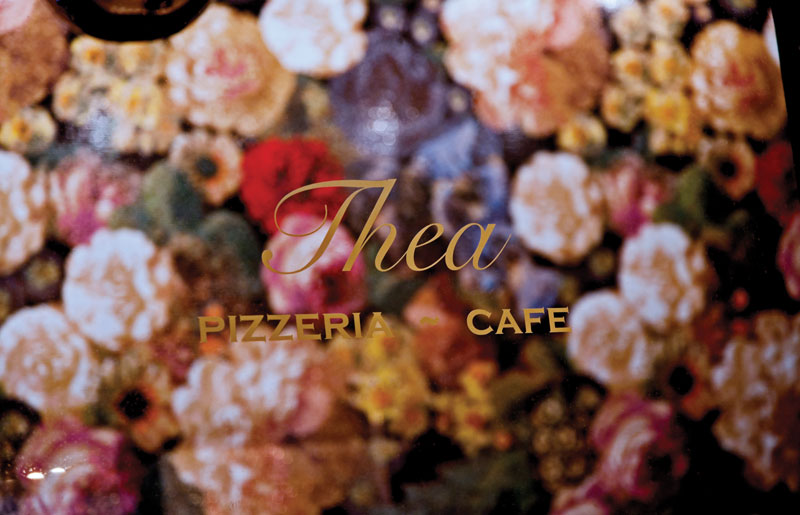 |
|
After opening in 2012, Goldman ignited curiosity and encouraged word-of-mouth by personally toting samples to working-class locals in Miami’s urban core. |
The monochromatic scheme also sets off the one dramatic splash of color in the room—a mosaic composed of 250,000 Venetian glass pieces. Goldman commissioned the wall-length work, which features an array of flowers: peonies, daffodils, roses. The English garden scene both evokes Goldman’s London upbringing and interrupts urban gloom with unabashed beauty. “If the working people of Miami are going to take time for lunch—not a common pastime here—we’d better make this a very rich experience,” Goldman notes. “Part of that is being in transporting surroundings, and only something very beautiful can do that. It lies in stark contrast to our concrete, urban-core environment.”
Customers have registered the effect: Their jaws drop. They pop in for solo lunches at the bar to gaze at the mosaic and feel their stress melt away, then recruit friends and family to snap pics in front of the sprawling piece. Goldman even shops the market for fresh flowers that mirror the mural, then personally arranges them around the restaurant to magnify the sensory indulgence.
Of course, this intense attention to detail has won Thea’s numerous awards and rave reviews, placed the restaurant on a slew of “best of” lists, and even landed Goldman an appearance on the Cooking Channel’s Pizza Masters. But she’s most proud of her team’s dedication and efforts toward excellence, helmed by chef Diego Flores. “I’m also so proud of the reach we have,” Goldman adds. “I take it very seriously that young people in their first jobs or hard-working, hourly-wage people bring me their money. I never want to let them down. We have ladies who lunch from Palm Beach in the same room with construction workers, and they all feel comfortable. They all feel it’s their place. And it is.”

